Today, technology underpins almost every business function, so much so that the way organisations manage their IT asset lifecycle has become increasingly critical. Understanding and managing this lifecycle properly means that businesses can maximise value, enhance security, and be more sustainable. The key to this is being proactive at each stage to maximise the value, usage and eventual re-use of the assets.
At Restore Technology, one of our specialities is the secure, transparent, and environmentally responsible management of IT lifecycle services. In this guide, we’ll explore the IT asset lifecycle management process, highlight common challenges, and share best practice tips we’ve mastered over the years.
What is the IT asset lifecycle and why is it important?
The IT asset lifecycle refers to the entire journey of an IT asset – from the moment it’s planned and procured to its deployment, usage, maintenance, and finally its retirement or disposal.
The International Association of IT Asset Managers describes IT Asset Management (ITAM) as “a set of business practices that incorporates IT assets across the business units within the organisation”. ITAM joins financial, inventory, contractual and risk management responsibilities to manage the overall lifecycle of these assets, including tactical and strategic decision-making
In essence, it means keeping track of the various kinds of technology that you use in your business. To prevent the lifecycle from becoming broken, it needs proper oversight. When done successfully, IT asset management makes sure that every asset is accounted for, cost-effective, and being utilised properly. If not, there’s a risk of underutilising devices, overlooking maintenance, compromising data security and mishandling end-of-life disposal.
That’s where IT asset lifecycle management (ITALM) comes in: a structured approach to managing IT equipment throughout its life. When done right, it supports:
- Financial transparency and cost control
- Data security and compliance
- Making sure equipment is optimised and being used effectively and properly
- Environmental responsibility and circular economy goals
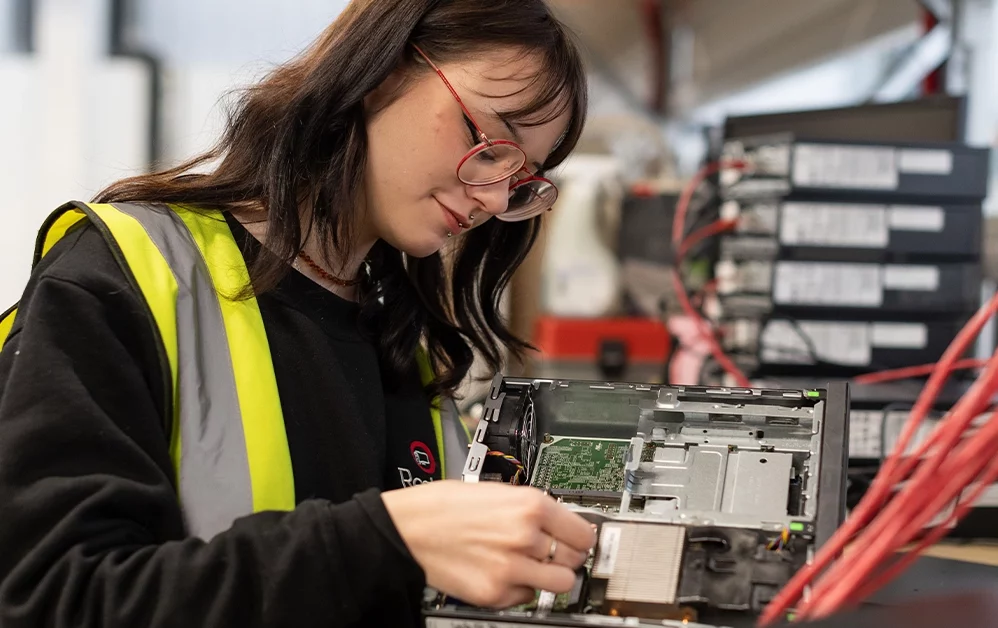
Where did the term "IT asset lifecycle" originate?
The concept of an IT Asset Lifecycle evolved from two other concepts: enterprise asset management (EAM) and IT service management (ITSM). As more and more digital services and infrastructure became integral to business operations, organisations started to realise they needed more distinct strategies for securing, tracking, maintaining and eventually retiring the technology they use. Lifecycle models were first formalised in the ITIL (Information Technology Infrastructure Library) and then adopted widely to help IT departments function more strategically.What is the IT asset lifecycle and why is it important?
The stages of the IT asset lifecycle

The first stage focuses on identifying a business’s needs, budgeting, choosing suppliers, and procuring IT assets and equipment. Initially, a plan is outlined for what IT equipment – everything from laptops to servers to software – the business needs, how the assets will be used and for how long, and the costs involved. Then those assets are procured.

Once the assets are in the business’s hands, they must be configured, tagged, and integrated into the business environment. To help iron out any potential logistical issues, services like Restore Technology’s deployment services make sure that all devices are rolled out with minimal disruption, using secure configuration protocols and precise asset tagging.

While the assets and equipment are being actively used, they must be monitored for performance and supported by maintenance. This is so that everything is kept in working order, is used for its intended purpose and can be readily fixed if any issues arise. This also applies to the use of software licenses, patching and upgrades.

Before completely retiring a device, it may be repurposed for something else or upgraded. This is so that there isn’t any needless waste, and to extend the lifespan and value of devices.

If assets become obsolete or are no longer performing as they should they must be securely decommissioned. This is to say that data must be wiped according to industry standards (e.g., NCSC, ISO 27001), with audits. This decommission, or disposition, can be a convoluted process, but it doesn’t have to be with Restore Technology’s services.

The final step is environmentally responsible disposal or resale. Devices must be safely destroyed or responsibly remarketed. For example, Restore Technology follows a strict no-landfill policy, offering secure IT recycling and remarketing services that support clients’ ESG goals and can help generate residual value.
How does IT Asset Lifecycle Management differ for various devices?
The IT hardware lifecycle varies from asset to asset. What is needed for a laptop, for example, is different for a server. While peripherals like printers and monitors may not hold any data, they still need to be responsibly managed and disposed of.
Laptops and desktops are used every day by most employees, they usually last about 3 to 5 years. They are moved around a lot and so need to be kept track of, updated regularly and securely wiped when no longer needed. In comparison, servers can last for a longer time and are usually used for extended periods. They need to be closely monitored to run smoothly, but also for security reasons.Servers can also hold sensitive information, be gateways for hackers to gain access, and keep businesses running. The same principle applies when disposing of them – secure data destruction and environmentally friendly disposal of the hardware.
Benefits of a strategic IT Asset Lifecycle Management process
Saving costs through a more considered and measured procurement stage and extending the life of assets
Strengthening security by ensuring data protection and proper disposal
Ensuring regulatory compliance is up to date, such as GDPR, ISO 27001 and the WEEE Directive
Improving efficiency, with fewer disruptions and faster deployments
Increasing sustainability through recycling, remarketing, and reduced carbon impact
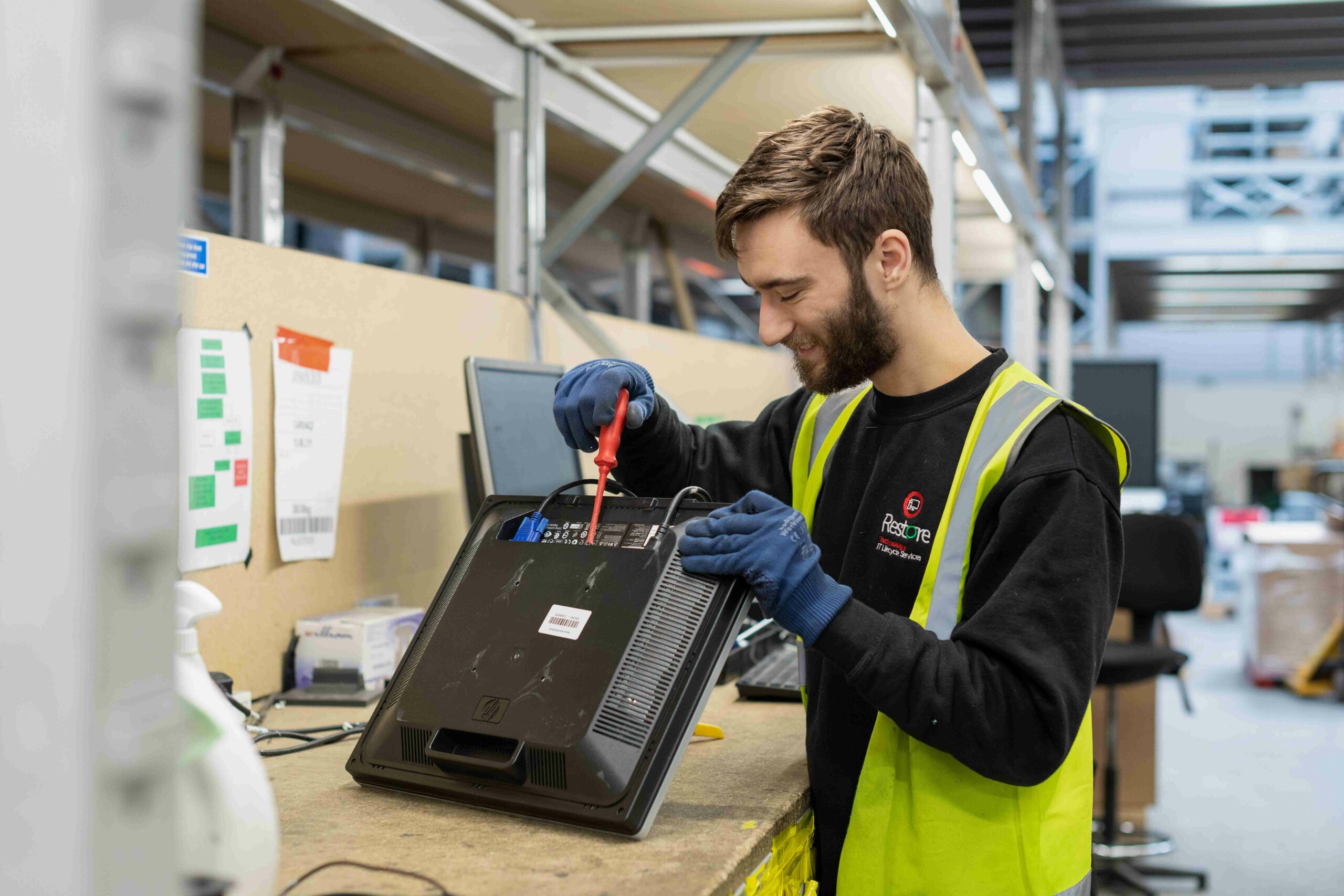
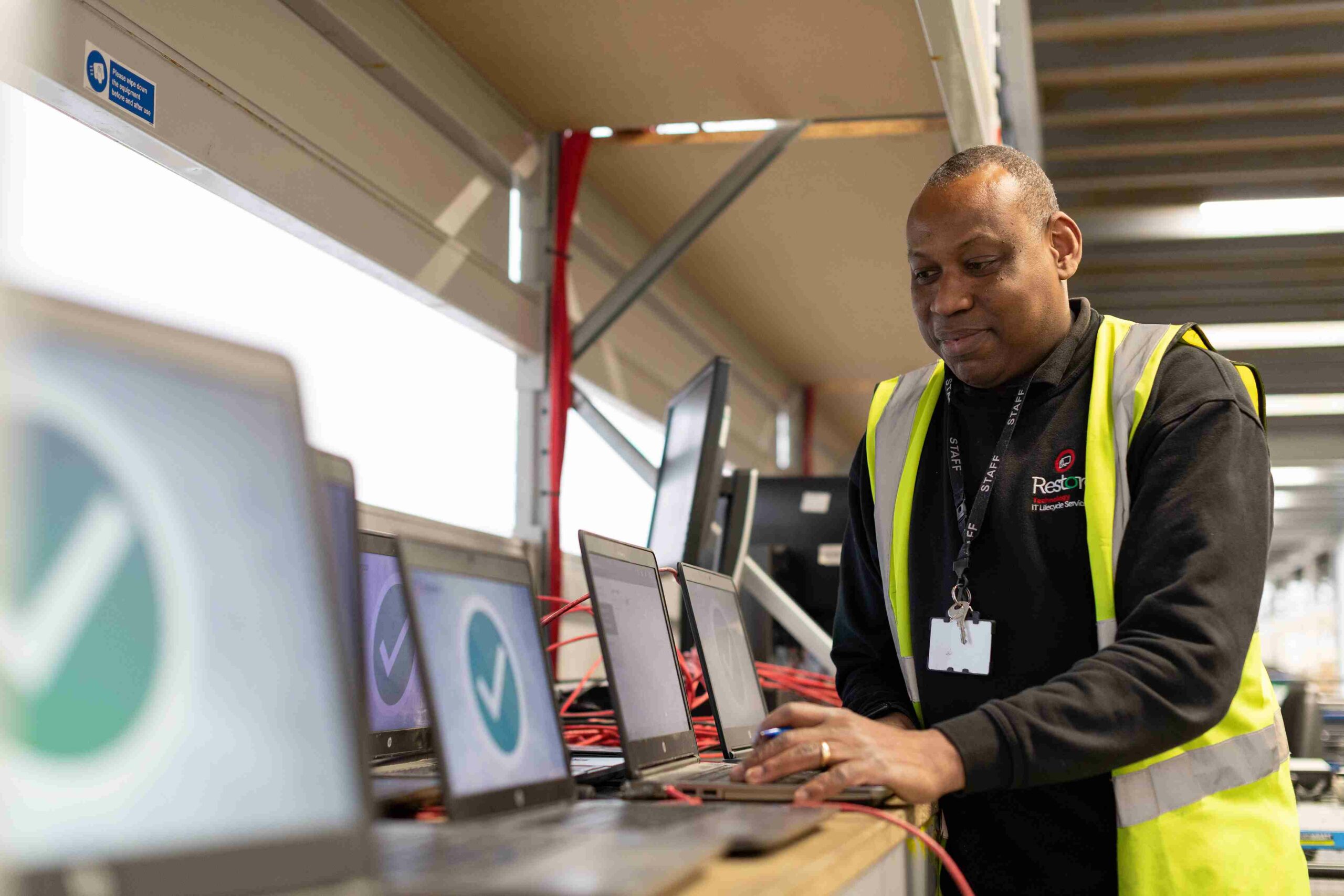
Common challenges (and how to overcome them)
Without real-time asset tracking showing device usage and location, it’s easy to lose control. That’s where tracking services like those offered by Restore Technology come in, with detailed asset registers and barcode-based tracking. As with any technology used by people in a business, end-of-life data breaches are a genuine risk, which makes secure data destruction and certified wiping services so beneficial and necessary.
Then there is a myriad of regulations to comply with, which could cause some logistical issues, so having an expert deal with ISO, GDPR, and environmental standards when decommissioning and disposing is again vital. Lastly, organisations must closely monitor the potential to overbuy or underuse IT assets. To overcome this, a detailed asset lifecycle analysis can help businesses buy the right amount and avoid redundancy.
Best practice tips for IT Asset Lifecycle Management
Standardise policies across the business, covering procurement, tagging, usage, and disposal.
Use asset management software to maintain a central inventory and track lifespans.
Schedule regular audits to ensure assets are accounted for and operating efficiently.
Work with certified partners, like Restore Technology, for secure data handling and eco-friendly disposal.
Adopt a circular economy mindset, which means planning for reuse or resale from the outset.
Review the performance and ROI of assets regularly to guide future investment decisions.
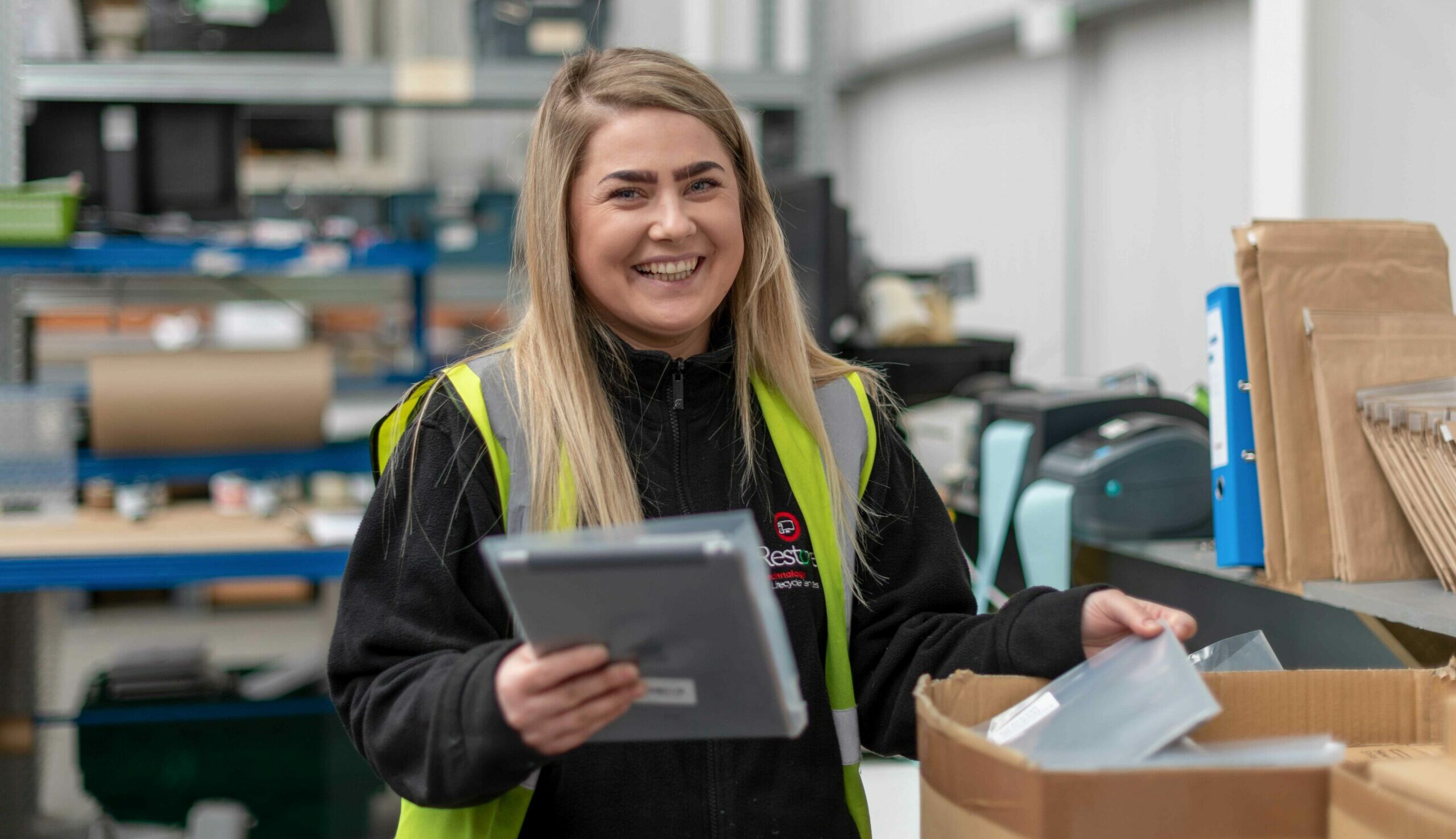
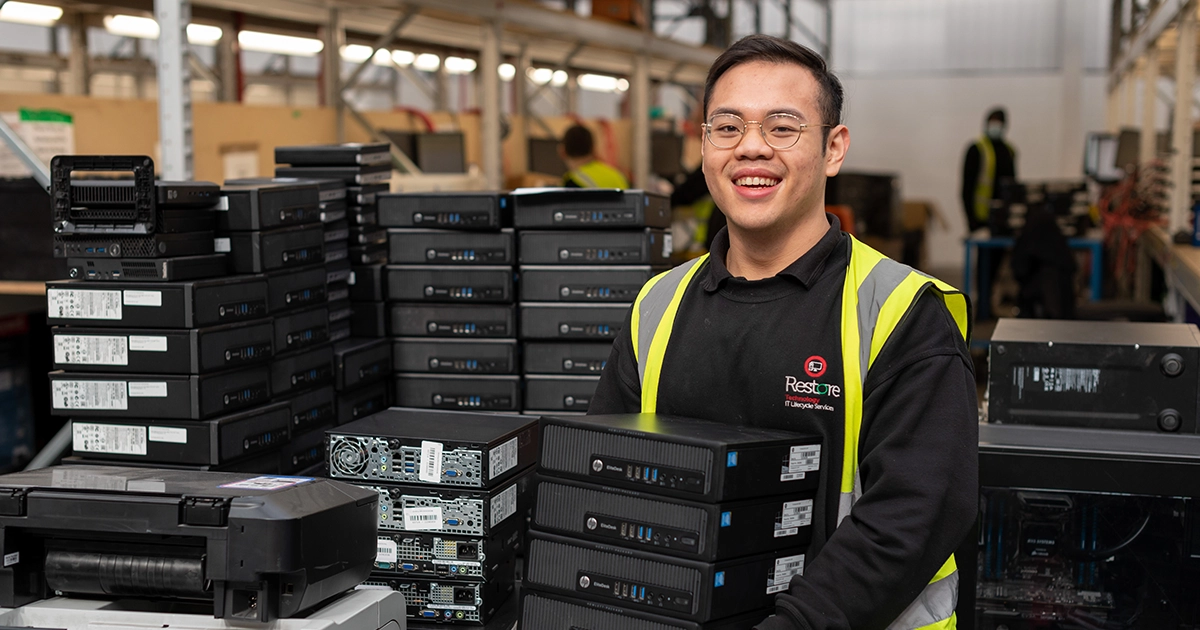
Why work with Restore Technology?
Certified data destruction, asset disposal and recycling, meeting the highest security standards
Transparent audit trails with certificates and real-time tracking
Flexible IT remarketing solutions to recover value from decommissioned assets
On-site and off-site services, tailored to your operational needs
Commitment to sustainability, including zero-to-landfill and carbon reporting

Ready to take control of your IT asset lifecycle?
Whether you’re refreshing your IT estate or building an end-to-end lifecycle strategy, Restore Technology’s expert team helps ensure your technology assets deliver long-term value without compromising on security or sustainability. Let Restore Technology help you manage it every step of the way – securely, transparently, and responsibly. Contact the team today to learn more.
